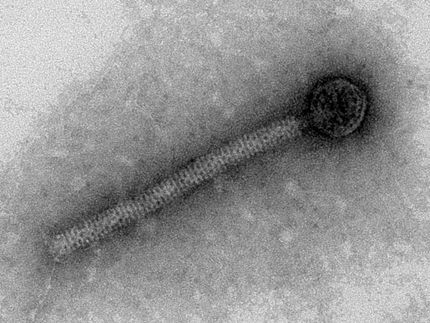Could viruses be used to treat acne?
Scientists have isolated and studied the genomes of 11 viruses, known as phage, that can infect and kill the acne-causing bacterium Propionibacterium acnes, potentially paving the way for topical therapies that use viruses or viral products to treat this vexing skin condition. Their results are reported in mBio®.
"There are two fairly obvious potential directions that could exploit this kind of research," says Graham Hatfull of the University of Pittsburgh, an author of the study. "The first is the possibility of using the phages directly as a therapy for acne. The second is the opportunity to use phage-derived components for their activities."
P. acnes is a normal resident on human skin, but its numbers increase substantially at puberty, eliciting an inflammatory response that can lead to acne. Although antibiotics can be effective in treating acne, antibiotic-resistant strains of P. acnes have emerged, highlighting the need for better therapies.
Hatfull and his colleagues at the University of Pittsburgh along with scientists from the University of California, Los Angeles, isolated phages and P. acnes bacteria from human volunteers with and without acne, then sequenced the phages' genomes. What they found in those genomes was surprising. The phages were all remarkably similar, sharing more than 85% of their DNA, an unheard of level of similarity among viruses, which usually exhibit a great deal of diversity. This lack of genetic diversity suggests that resistance to phage-based antimicrobial therapy is less likely to develop, they say.
All of the phages carry a gene that makes a protein called endolysin, an enzyme that is thought to break down bacterial cell walls and kill the bacteria. Enzymes like this are used in other applications, says Hatfull, suggesting that endolysin from these phages might also be useful as a topical anti-acne therapeutic. "This work has given us very useful information about the diversity of that set of enzymes and helps pave the way for thinking about potential applications," he says.
From here, Hatfull says, research with these phages will explore how they might be used therapeutically, but phages like these can also provide useful tools, like genes and enzymes, that can be used to manipulate and understand the bacteria they infect. "The information derived from these phages helps contribute toward those kinds of genetic tools," says Hatfull.
Most read news
Other news from the department science

Get the life science industry in your inbox
By submitting this form you agree that LUMITOS AG will send you the newsletter(s) selected above by email. Your data will not be passed on to third parties. Your data will be stored and processed in accordance with our data protection regulations. LUMITOS may contact you by email for the purpose of advertising or market and opinion surveys. You can revoke your consent at any time without giving reasons to LUMITOS AG, Ernst-Augustin-Str. 2, 12489 Berlin, Germany or by e-mail at revoke@lumitos.com with effect for the future. In addition, each email contains a link to unsubscribe from the corresponding newsletter.
Most read news
More news from our other portals
Last viewed contents

Swimming behavior of sperm: plasticizers temporarily alter motility

DNA guardians out of control - Our own immune system can become the enemy when mechanisms that are actually protective get out of control






















































